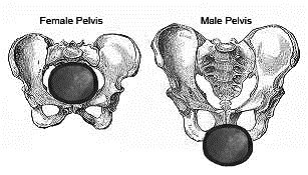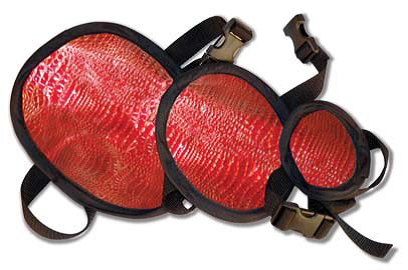The issue of gonadal shielding has become a hot topic within the radiology community as gonadal and fetal shielding has been a long-standing practice for radiologic technologists since the 1950’s. It was also a “HOT TOPIC” at the recent National Conference of Radiation Control in Danvers, MA. In addition, the healthcare community doesn’t take this issue lightly as changing radiation safety “best practices” that have been in place for decades would require a lot of amendments to state statues, facility protocols, educational programs, and also patient expectations.
Recent scientific evidence, however, has prompted many of the major medical and scientific imaging organizations to reassess the risks and benefits of this gonadal shielding. The American Association of Physicists in Medicine recommended the discontinuation of these shields back in April of 2019 claiming patient shielding may jeopardize the benefits of undergoing radiological imaging and that the shields could obscure anatomic information or AEC of imaging systems, thus increasing the patient’s dose. Today, the National Council on Radiation Protection and Measurements and supported by the ACR, ASRT, AAPM, ABR and SPR recommends no longer shielding patient’s reproductive organs during imaging examinations during Abdominal and Pelvic Radiography.
There has been a lot of biological considerations and technical advancements behind this change and shift in thinking. Since the 1950’s, there has been a major decline in gonad exposure (up to 95%) without any loss of image quality. There is also a current understanding that in general, gonads are less sensitive to radiation that was previously thought decades ago. Studies from those exposed to the 1945 atomic bombing have not demonstrated radiation induced heritable effects with any statistical significance. Under ideal conditions when the gonads are fully covered by a shield, gonadal dose may decrease by up to 95% in men and 50% in women. However, the reduction in effective dose is more modest – 37% I men and only 20% in women.
Studies have shown that shielding of the ovaries may be incomplete in more than 50% of the case where shields were placed based on anatomical landmarks. Shielding complications have been seen in women where the location of the ovaries varies widely from patient to patient. There have also been issues in shielding young boys where the testes in several patients have been above the scrotum also leading to incomplete shielding of the gonads properly. Small children have also created issues when wiggling displaces the shield from the gonads when the technologists leaves the room to take the x-ray exposure leaving improper shielding and often repeated examinations because the shield has obscured important anatomy.
A statement made in the Journal of American College of Radiology 2020 discusses the little effect that shielding has on dose to anatomy outside the field of view. Studies show that 80% of the dose outside the FOV is from internal scatter which gonadal shielding does not absorb. All current scientific evidence supports the conclusion that potential benefit of patient shielding has substantially diminished over the years.
Does this mean shielding should no longer be used? You could say that since patient gonadal shielding provides little if any health benefit to patients, it may still be reasonable to continue the practice as it provides peace of mind to many patients and especially to parents of young children. But, this goes against all the potential risks associated with patient shielding – especially the risks discussed above where patient shielding can often obscure clinically relevant anatomy near gonads, the inconsistencies with AEC, the less than tangible dose savings when outside the FOV, and not to mention the inconsistencies in the overall shielding message when some shields are used, and others are not during all x-ray imaging examinations. With that all said, its going to take a lot to convince radiologic technologist and patients to stop using lead shields in the future. Z&Z Medical will continue to provide a variety of Gonad Shields to provide shielding as long as the demand is there. What do you think? We would love to hear your comments!
Further Reading:
Stat13_Companion_Comm.fm (ncrponline.org)
Statement13.fm (ncrponline.org)







